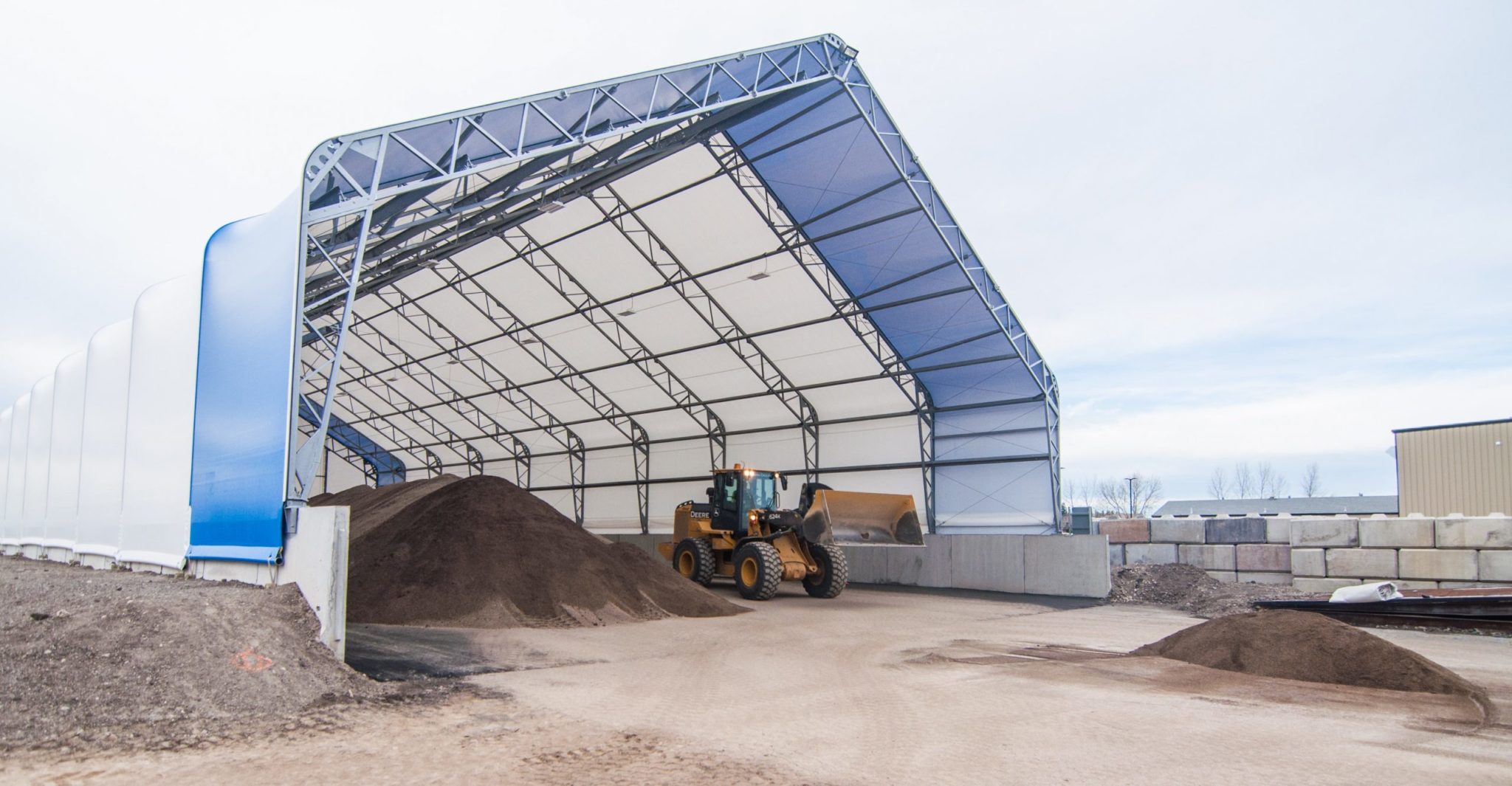Salt Protection: Getting the Most Out of Your Salt Storage Building
by Admin | May 29, 2018

There are many choices available for a salt storage building. However, as a public works professional, chances are you need to make the best of what you have. From the simplest of solutions, such as a tarp thrown over a salt pile, to the more permanent, environmentally-sound, and truck-friendly fabric or dome style buildings, there are ways to make your buildings last. This article will outline some of the strategies and tips for making the most of your particular solution and understand when it is time to upgrade.
Wood Buildings
One of the most popular building materials is wood. The laminated wood arch Quonset style, wood frame style, and timber dome style are common types of buildings using this building material. Wood can be an inexpensive option, but careful monitoring and maintenance is essential to ensure the longevity of this kind of building. The key downside of wood buildings is the possibly of warp, rotting, and swelling due to water and salt brine exposure. Some wood is treated with an oil-borne preservative which can extend the life of these buildings considerably, but if the wood in your storage building is untreated and not maintained properly, a new building can fail in as little as 10 years. Another consideration, particularly with timber domes, is the susceptibility to damage from heavy equipment which can undermine the integrity of the dome and lead to collapse. A key way to lengthen the life of a wood building is to reduce all possible exposure of the wood frame to moisture through regular checks of the roof and siding for leaks. Ventilation is important when storing salt to slow the deterioration of wood and rusting of metal fasteners from the corrosive environment. Keeping spills and salt from contact with the foundation is also essential. As an added benefit, reduced moisture in your salt storage building will reduce salt clumping that could damage spreading equipment.
All-Steel Buildings
Another type of salt storage building is steel. Steel buildings gain the benefit of the strength and lighter weight compared to wood. Some buildings, such as the steel arch structure, utilize a steel roofing system as well as solid steel walls. These buildings are highly durable but require adequate lighting. As with wood buildings, ventilation is extremely important to manage corrosion. Great care must be taken to keep salt out of contact with the steel walls and roofing to prevent rust which weakens the structure. Maintenance is low with steel buildings, but regular checks for dents and preventative measures such as use of bollards around garages and doorways can extend their lifespan.
Fabric Structures
Many buildings lack enough clearance for trucks to easily empty their salt deliveries. This is one of the benefits of salt storage fabric structures as they can have high clearance built in, among other available enhancements. Another benefit is the ability to easily add on to the building if storage needs increase over time. Finally, because fabric structures allow in natural light, there is better visibility overall and electricity costs are reduced. Engineered fabric structures are low maintenance and the fabric covers in these structures are naturally resistant to corrosion. Depending on the age and make of the fabric structure, maintenance may involves tightening the cover and checking the foundation and cover for wear annually. If your fabric structure steel structure is hot-dip galvanized, and/or further protected with a liner, the exposed trusses will be highly resistant to the corrosive properties of salt.
When to Upgrade Your Existing Salt Storage Building
Aside from the obvious signs of impending structural failure, there are other less serious indications it is time to look at a new salt storage solution. Has the amount of salt needed for the winter season increased significantly through newly built roadways or subdivisions? If so, there may be cost savings over time by building a larger structure thus reducing numerous small winter deliveries. Are trucks able to easily enter and exit the building? A new building built with high clearance will help reduce the risk of damage by heavy equipment. How old is your existing building and does it meet current state or provincial requirements? These considerations may add up to looking at a new salt storage solution in the near future.
Request a Quote from Calhoun Super Structure to Upgrade Your Storage Building
According to a recent survey, the vast majority of salt storage fabric buildings already have the recommended, or in some areas required, impermeable surface and waterproof cover to prevent loss of salt through runoff and keep other contaminated liquids from affecting the environment. Calhoun Super Structure can help you with all your fabric building needs. Contact us today for a quote.

